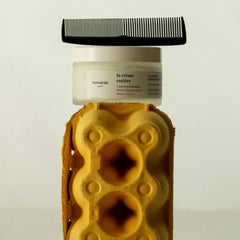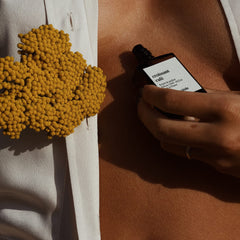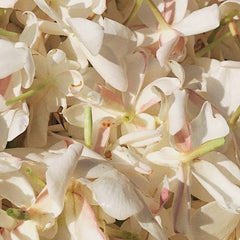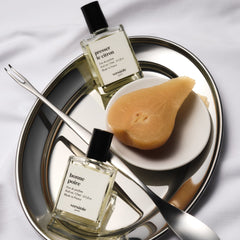Aldehyde notes in perfumery:
Although widely used in perfumery, aldehyde notes are not part of the 6 original families (Floral, Hesperidia, Woody, Oriental, Fern, Chypre) according to the SFP (Société Française des Parfumeurs).
Aldehydes are synthetic molecules with very distinctive smells: you either love them or you hate them.
Some will say that these notes are soapy, old-fashioned, (too) close to coriander and bitter.
Aldehydes are recent in the history of perfumery, dating back to the beginning of the 20th century, and became fabulously famous in 1921 thanks to the world's best-selling fragrance: "N°5" by Chanel.
These aldehydic notes add freshness, a clean facet and a metallic edge, and go very well with floral notes.
Note that some synthetic notes are called "Aldehyde..." but are not. This is the case with Aldehyde C14, C16 and C18, which are synthetic fruity notes.
These are usually top notes. Here are some raw materials :
Aldehyde C9: zesty.green.fruit of water
Aldehyde C10: orange.fat.sour
Aldehyde C11: zesty.soapy.coriander
Aldehyde C12: zesty.mandarin.floral
Mandarin aldehyde: orange.metallic.coriander
Adoxal: marin.zesty.water fruit
Some emblematic perfumes:
"N°5" - Chanel 1921 - Ernest Beaux / Floral Aldehyde
"N°22" - Chanel 1922 - Ernest Beaux / Floral Aldehyde
"Arpège" - Lanvin 1927 - Paul Vacher & André Fraysse / Floral Aldehyde
"Lui" - Guerlain 1929 - Jacques Guerlain / Floral Green
"Madam Rochas" - Rochas 1960 - Guy Robert / Floral Aldehyde
"Carriage" - Hermès 1961 - Guy Robert / Floral Aldehyde
"Calender" - Paco Rabanne 1969 - Michel Hy / Floral Aldehyde
"Left bank" - YSL 1971 / Floral Aldehyde
"First" - Van Cleef & Arpels 1976 - Jean-Claude Ellena / Floral Aldehyde
"Rock Flower" - Caron 1993 / Floral
"Aldehyde 44" - The Lab 2006 - Yann Vasnier / Floral Woody Musk
"White" - Byredo 2009 / Floral Aldehyde
This list is not exhaustive because there are a lot of beautiful launches: some emblematic, some more commercial.






